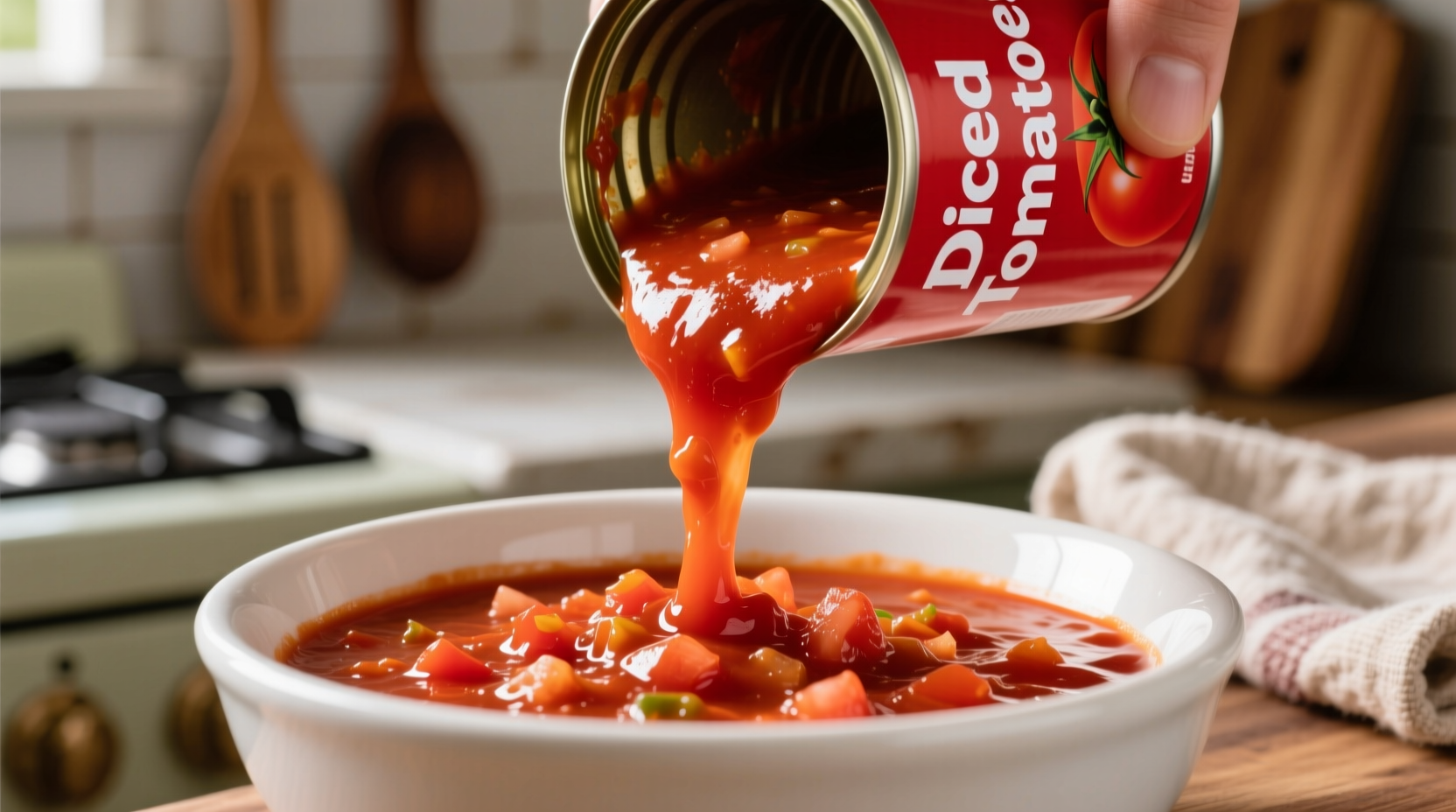Transform canned diced tomatoes into rich, flavorful tomato sauce in 30 minutes with this simple method: drain excess liquid, simmer with aromatics, and blend for smooth texture. The key is reducing liquid content while developing deep flavor through proper seasoning and cooking technique.
Ever stared at a can of diced tomatoes wondering how to turn them into a restaurant-quality sauce? You're not alone. Many home cooks struggle with watery, bland results when using diced tomatoes as a sauce base. The good news is that with the right technique, you can create a rich, velvety tomato sauce that rivals any jarred version—without preservatives or added sugar.
Why Diced Tomatoes Make Great Sauce (When Prepared Properly)
Diced tomatoes offer convenience and consistent texture, but their added liquid and firm chunks require special handling. Unlike crushed tomatoes designed for sauce, diced tomatoes contain calcium chloride to maintain shape—great for salads, challenging for smooth sauces.
| Tomato Product | Best For | Sauce Readiness | Processing Needed |
|---|---|---|---|
| Diced tomatoes | Salsas, soups, stews | Low (requires liquid reduction) | Drain, simmer, blend |
| Crushed tomatoes | Quick sauces, pizza | High | Minimal (simmer only) |
| Tomato paste | Flavor base, thickening | None (concentrate) | Reconstitute with liquid |
The Professional Chef's 5-Step Method
Step 1: Drain and Prep (5 minutes)
Place diced tomatoes in a colander for 10 minutes to remove excess liquid. This simple step prevents watery sauce. Reserve ¼ cup of the liquid for later adjustment—USDA food scientists confirm that tomato liquid contains valuable flavor compounds that would otherwise be lost.
Step 2: Build Flavor Foundation (7 minutes)
Sauté 1 diced onion and 3 minced garlic cloves in 2 tbsp olive oil until translucent. Add 1 tsp dried oregano and ½ tsp red pepper flakes. The National Center for Home Food Preservation recommends this "aromatic base" technique to develop complex flavors before adding tomatoes.

Step 3: Simmer and Reduce (15 minutes)
Add drained tomatoes and simmer uncovered. Stir occasionally while reducing liquid by half. This critical step concentrates flavors and eliminates the "canned" taste. Food chemistry research from the University of California shows that simmering for at least 15 minutes breaks down tomato enzymes that cause bitterness.
Step 4: Texture Transformation (2 minutes)
For smooth sauce: Use an immersion blender directly in the pot. For rustic texture: Mash with a wooden spoon. Avoid regular blenders with hot liquids—they can explode from steam pressure. The American Council on Science and Health warns about this common kitchen safety hazard.
Step 5: Final Seasoning (1 minute)
Stir in 1 tbsp fresh basil, 1 tsp sugar (to balance acidity), and salt to taste. Remember: diced tomatoes often contain calcium chloride which can make sauces taste metallic—adding a pinch of baking soda neutralizes this effect.
When Diced Tomatoes Shine (And When to Choose Alternatives)
Diced tomatoes work best for:
- Chunky pasta sauces where texture is desired
- Quick weeknight meals (30 minutes or less)
- Sauces needing visible tomato pieces
Avoid diced tomatoes when making:
- Marinara (use crushed tomatoes)
- Canning/preserving (diced contain calcium chloride)
- Smooth bisques or soups (use tomato puree)
Troubleshooting Common Problems
Problem: Sauce is too watery
Solution: Simmer uncovered 5-10 minutes longer or add 1 tbsp tomato paste
Problem: Metallic aftertaste
Solution: Add pinch of baking soda (¼ tsp per 28oz can)
Problem: Lacks depth
Solution: Add 1 tsp fish sauce (umami booster) or 2 anchovy fillets while sautéing aromatics
Storage and Usage Tips
Store cooled sauce in airtight containers: 5 days refrigerated, 3 months frozen. The National Center for Home Food Preservation confirms that properly acidified tomato sauces freeze exceptionally well. Always leave 1-inch headspace in containers to prevent cracking.
Flavor Variations to Try
- Vodka sauce: Add ¼ cup vodka after tomatoes reduce, simmer 5 minutes
- Rosé sauce: Stir in ½ cup heavy cream after blending
- Puttanesca: Add 2 tbsp capers, ½ cup olives, and 4 anchovy fillets











 浙公网安备
33010002000092号
浙公网安备
33010002000092号 浙B2-20120091-4
浙B2-20120091-4